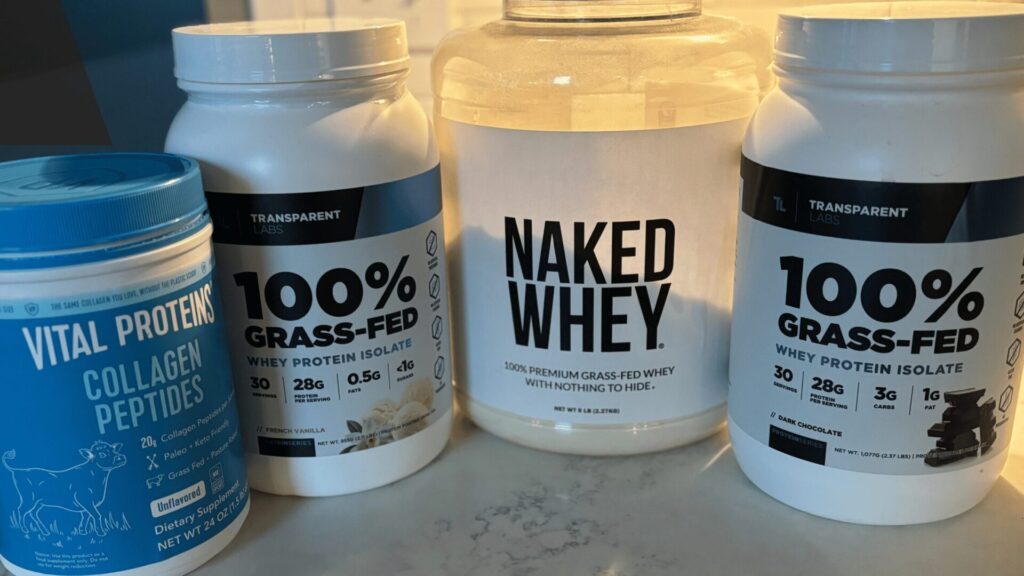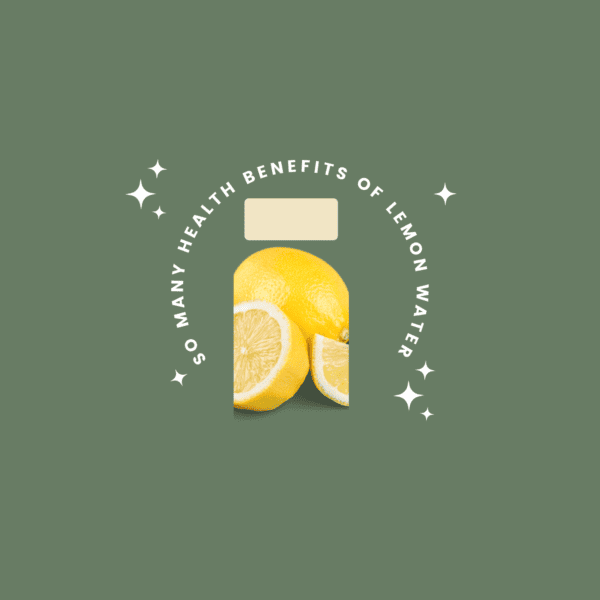Throughout this article you will learn why protein is so important and if supplementing with a quality protein powder is right for you. We will also review the best protein sources and best protein powder options available.
Protein is one of the three essential macronutrients we need to consume daily, but why is it so vital, and why are there numerous supplemental options? Let’s delve into the significance of protein in the body and identify the best protein sources whether whole foods or protein powders. Proteins constitute over 15% of our body weight, with every cell containing protein. They form the foundation of our major structures, including bones, muscles, skin, hair, blood, and hormones. Beyond being building blocks, proteins produce antibodies crucial for our immune system, safeguarding us from viruses and bacteria. Moreover, proteins play a role in creating blood clots to stop bleeding from injuries.
What is Protein and Why is it Important?
Proteins, composed of amino acids containing nitrogen, act as the fundamental building blocks of our body. Among the hundreds of amino acids, we use about twenty to craft the proteins necessary for bodily functions. These twenty amino acids fall into two categories: non-essential (produced by the body) and essential (obtained from food). A “complete protein” contains all nine essential amino acids in sufficient quantities, primarily found in animal foods. While most plant-based sources contain all essential amino acids, they are considered incomplete due to varying amounts, necessitating a combination for comprehensive amino acid intake.
So, let’s break the 20 amino acids down by their categories:
Non-essential amino acids (our bodies can make these): There are 11
Alanine, Arginine, Asparagine, Aspartic acid, Cysteine, Glutamic acid, Glutamine, Glycine, Proline, Serine, Tyrosine
Essential amino acids (we MUST obtain from food): There are 9
Histidine, Isoleucine, Leucine, Lysine, Methionine, Phenylalanine, Threonine, Tryptophan, Valine
How Much Protein do I Need Daily?
While protein is vital for every cell in our body, determining the daily requirement is nuanced. The U.S. government suggests healthy diets to combat chronic diseases, relying on Recommended Dietary Allowances (RDAs). The Food and Nutrition Board of the National Academies of Sciences Engineering has created a Reccomended Dietery Allowences (RDA) which tells the public the amounts of nutrients that should be consumed daily. However, RDAs primarily address deficiencies rather than optimal health. Individual needs vary, considering factors like age, sex, weight, activity levels, and pregnancy/breastfeeding status.
For adults aged 19 and up, the RDA is 0.8 grams of protein per kilogram of weight per day (1). To calculate, convert weight from pounds to kilograms (1 kg = 2.2 lbs.) and multiply by 0.8 (g/kg/day).
Example: If you weigh 150 lbs., the calculation is 150/2.2 = 68.18 x 0.8 = 55 grams of protein a day. However, this amount aims to prevent deficiency and is notably lower than what’s required for optimal health. Research in The American Journal of Clinical Nutrition suggests consuming 1.2-2.0 g/kg/day for enhanced outcomes related to weight management, healthy aging, body composition, and muscle strength (2).
Exploring Best Protein Sources
Step 1 WHOLE FOODS. Find protein in foods that have been minimally processed so you can get the most nutrient dense profile of that food.
I was vegan for a few years, so I absolutely understand animal products are not everyone’s cup of tea but please note they offer the most protein (they are considered complete protein sources because they offer adequate amounts of all 9 essential amino acids). Animal foods are also easier for our bodies to digest and therefore easier to gain the nutrients from them. BUT plant foods also contain protein and if you are vegetarian or vegan, it’s important to combine certain foods to create complete protein. Note, soy is considered a complete protein.
Complete protein animal food options: Beef, lamb, pork, chicken, turkey, duck, organ meats, fish such as salmon, tuna, trout etc., shellfish, dairy products, and eggs.
Incomplete protein options: Nuts & seeds (almonds, walnuts, cashews, pecans, sunflower seeds, pumpkin seeds, hemp, and flax seeds). Beans, legumes, and grains are also good plant-based protein sources.
List of high protein whole food options (there are MANY protein options this is just a small starting list). You can find a comprehensive list of protein food sources and their protein content from the USDA (3).
- 6 oz of chicken breast=54.5g protein
- 6 oz pork chop= 52.7 g protein
- 6 oz steak=48.7g protein
- 1 cup of firm tofu=43.5g protein
- 1 cup of lentils= 17.9g protein
- 1 oz of pumpkin seeds= 8.5g protein
- 1 large egg= 6.3g protein (4)
Step 2: Supplement with a protein powder
If you think you’re not getting enough protein from your regular meals, protein powders can be a helpful choice. They’re a widely used supplement, providing a convenient way to boost your protein intake. But before you buy one, it’s important to know a few things.
The FDA considers protein powder as a supplement, but they don’t check its ingredients. This lack of oversight means the label might not accurately represent what’s in the product. To make sure you’re getting a transparent and high-quality product, choose a trustworthy brand. You can do this by checking their website and using third-party testing sites like Labdoor.com. I’ve personally used Labdoor.com, and they independently test products, giving them a grade based on their findings. Now, let’s explore some popular protein powders on the market to find the best protein powder option that suits you best!

Animal Based Protein Powders
Whey protein: Whey protein, derived from cow’s milk, is available in two forms: concentrate and isolate. It is renowned for its easy digestibility and is obtained during the cheese-making process when the liquid part of milk separates. This liquid is then processed into whey protein powders. Being a complete protein with all nine essential amino acids and enough of each to meet daily needs, whey offers a robust nutritional profile. When opting for animal-based protein, choosing a grass-fed option ensures maximum nutrient density.
The distinction between concentrate and isolate lies in the processing of whey protein. Both come from the same source but differ in refinement. Concentrate involves drying the liquid, resulting in a less refined process that retains some fat and carbohydrate content.
Concentrate involves drying the liquid, resulting in a less refined process that retains some fat and carbohydrate content.
Isolate undergoes further processing to eliminate carbohydrates and fat, ensuring a minimum of 80% protein. Isolate is pricier due to higher protein content per scoop. However, the refining process may reduce its effectiveness despite higher protein intake.
Whether whey concentrate or isolate is better depends on personal preferences. If you’re comfortable with carbs, fat, and lactose in your protein supplement, concentrate offers purity and benefits. On the other hand, lactose intolerance or a quest for maximum protein per serving might lead you to choose isolate. I found this interesting article that breaks down how whey protein is created, check it out here if you are interested (no affiliate with this website’s products).
Casein: Casein, constituting 80% of cow’s milk compared to whey’s 20%, is the less popular sibling. It is derived from milk curds and contributes to the white appearance of milk. Processed by draining whey from the liquid and grinding curds into a powder, casein, like whey, is a complete protein. The key difference lies in digestion speed—casein is digested more slowly, forming a gel in the stomach, and releasing amino acids gradually over several hours (5). This characteristic makes casein an excellent choice for those aiming to feel full longer, build muscle, and obtain additional calcium.
Collagen (Beef protein): Collagen, a protein abundant in animal tissues, muscles, bones, and skin (commonly sourced from cows in supplements), lacks sufficient tryptophan and methionine, essential amino acids. Despite being incomplete, collagen is crucial for creating skin, hair, nails, bones, tendons, and ligaments, forming connective tissue. Aging, sun exposure, smoking, and alcohol consumption can reduce collagen production. While some studies suggest benefits of collagen supplements for joint and skin health, more research is needed (6). Concerns about heavy metal content and cost raise questions about collagen supplements’ efficacy.
An honest recommendation is to prioritize whole foods over supplements. Meat with connective tissue, like pot roast and brisket, and homemade bone broth, rich in nutrients, provide natural collagen. Making bone broth at home involves simmering bones from a local butcher with vegetables and seasoning for hours, offering a cost-effective and nutrient-rich alternative to expensive supplements. If you choose to consume collagen supplements, ensure it is grass-fed.
Plant Based Protein Powders
Plant-based protein powders are relatively new to the protein supplementation scene but are rapidly gaining popularity, particularly among those opting for a plant-centric diet. These powders are crafted from various plant sources, including peas, soy, brown rice, and seeds such as hemp or chia. It’s essential to note that plant proteins are not as easily digestible as their animal counterparts, with only 50-75% digestibility compared to 85-95% for animal proteins. A 2023 review in The Journal of Nutrition, examining studies replacing animal protein with plant-based protein, suggested a lower overall protein intake, potentially linked to differences in digestibility (7). Further scientific studies are required to comprehensively understand the digestible contrast between the two protein sources.
Also, most plant protein powders lack enough of the nine essential amino acids to be considered complete. To help with this, combining specific plant proteins, such as pea and brown rice, can ensure you are getting a comprehensive number of amino acids.
Pea Protein
Pea protein powder is made from yellow peas and is done by removing the pea’s shell and grinding it into flour. Pea protein does not contain any lactose and therefore can be a great option for those who experience gas, bloating, or digestive upset with animal protein powders. Pea protein is also rice in iron which is an added benefit, but plant-derived iron is not absorbed as well as animal-based iron (plant is non-heme iron while animal is heme iron). As noted above, pea protein is low on a few essential amino acids, methionine and cystine so try and combine this supplement with rice protein or oats if trying to stay plant based.
Soy Protein
Soy protein powder, produced by extracting oil from soybeans and isolating the protein, stands out as the only complete plant-based protein powder. Some studies suggest potential cardiovascular benefits of soy protein, including a risk reduction in LDL cholesterol and potential support for bone mineral density. However, it’s important to note that most soybeans are genetically modified and often contain high levels of pesticides. If you believe soy protein is the right choice for you, opting for organic soy protein powder is recommended.
Hemp Protein
Hemp protein is derived from hemp seeds, with the oil removed via a cold expeller press, and the remaining product ground into a powder. While hemp protein contains all nine essential amino acids, the exact quantities are not definitively established, as some studies indicate potential variations. Despite having less protein than other plant-based options, hemp protein boasts being the least processed. Additionally, it retains 7-8 grams of fiber per 1/4 cup, a notable benefit compared to pea, soy, and rice proteins. Hemp protein also offers healthy fats and minerals, contributing to its nutritional value.
This protein powder could be a good option, but you want to ensure you are getting protein through other sources during the day since hemp protein contains less amounts of protein than any of the other sources. For example, looking at Sun warrior’s Organic Hemp Protein, 30grams contain 15grams of protein at 110 calories a serving. While Now Foods Soy Protein Isolate has 20grams of protein with a 24gram servicing and 90 calories.
Closing Thoughts
Protein plays a crucial role in maintaining the structural integrity of our body, serving as the building blocks for bones, muscles, skin, hair, blood, and immune system components. The importance of understanding protein goes beyond mere consumption, as the types and combinations of amino acids in our diet impact our overall health.
As you navigate the realm of protein and its diverse sources, it’s crucial to consider your individual needs, dietary preferences, and health objectives. Initiate this journey by incorporating an array of protein-rich whole foods into your diet, with a focus on lean meats, dairy, eggs, legumes, nuts, and seeds, and exploring the best protein sources for your unique nutritional needs.
Supplementation with protein powders can be beneficial, especially for individuals struggling to meet their protein needs through whole foods alone. However, it’s crucial to choose reputable brands that prioritize transparency and quality. Animal-based protein powders like whey and casein offer complete amino acid profiles, while plant-based options such as pea, brown rice, and hemp require thoughtful combinations to achieve completeness.
Remember, the key to optimal health lies in a holistic approach that considers individual differences. Consult with a healthcare professional or registered dietitian to tailor your protein intake to your unique needs. Make informed choices, embrace a diverse range of protein sources, and prioritize the overall nutritional quality of your diet for a healthier and more balanced lifestyle.
Article References:
- Institute of Medicine (US) Committee to Review Dietary Reference Intakes for Vitamin D and Calcium, A Catharine Ross, Taylor CL, Yaktine AL, Del HB. – Dietary Reference Intakes for Calcium and Vitamin D – NCBI Bookshelf. Nih.gov. Published 2011. Accessed January 21, 2024. https://www.ncbi.nlm.nih.gov/books/NBK56068/table/summarytables.t4/?report=objectonly
- Rodriguez NR, Miller SL. Effective translation of current dietary guidance: understanding and communicating the concepts of minimal and optimal levels of dietary protein. The American Journal of Clinical Nutrition. 2015;101(6):1353S1358S. doi:https://doi.org/10.3945/ajcn.114.084095
- U.S. DEPARTMENT OF AGRICULTURE. USDA National Nutrient Database for Standard Reference Legacy (2018. USDA National Agricultural Library. Accessed January 23, 2024. https://www.nal.usda.gov/sites/default/files/page-files/Protein.pdf
- Whitbread D. Top 10 Foods Highest in Protein. myfooddata. Published March 10, 2009. https://www.myfooddata.com/articles/foods-highest-in-protein.php
- Hoffman JR, Falvo MJ. Protein – Which is Best?. J Sports Sci Med. 2004;3(3):118-130. Published 2004 Sep
- Harvard T.H. Chan. Collagen. The Nutrition Source. Published May 26, 2021. https://www.hsph.harvard.edu/nutritionsource/collagen/
- Soh P, Smith NW, Pamela von Hurst, McNabb WC. Evaluation of Protein Adequacy from Plant-Based Dietary Scenarios in Simulation Studies: A Narrative Review. The Journal of Nutrition. Published online November 1, 2023. doi:https://doi.org/10.1016/j.tjnut.2023.11.018


